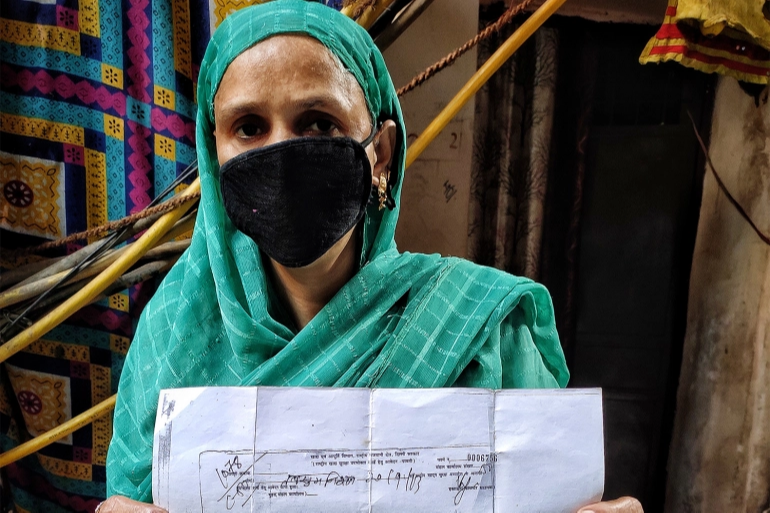
Tabassum Nisha holding her 2013 receipt of her application for a ration card [Srishti Jaswal/Al Jazeera]
New Delhi, September 6 (RHC)-- Tabassum Nisha lives in a shanty in a cramped corner of New Delhi’s Malviya Nagar neighbourhood with her five children. The 38-year-old widow, who worked as a housemaid, used to survive on a monthly income of $50 when she needed more than twice that amount to feed her children.
Barely able to make ends meet, Nisha lost her job when a sudden lockdown was announced by the Indian government in March last year to contain the coronavirus pandemic. She somehow fed her children during the months-long lockdown, seeking small loans from neighbours and shopkeepers. When they stopped helping her, she sought help from charities in the city.
It became increasingly difficult for Nisha to feed her children, and she married off her 18-year-old daughter in December last year to reduce her burden. Nisha thought the lockdown would not last longer than 2020. But another one was announced in April this year as the country faced a brutal second wave of the virus.
This time, there were no charities around to feed her and her children. She said she survived the second lockdown on one meal a day. Now the anticipation of a third COVID lockdown leaves her in fear of starving to death.
The ration card is a document issued by various state governments to households eligible to purchase subsidised food grains from the public distribution system under the National Food Security Act (NFSA).
Since 2013, Nisha has applied for a ration card – three times. Despite her eligibility, it was never issued. The PMGKAY, which boasts of being the largest food security programme in the world, aims to feed India’s poorest during the pandemic. It provides five kilogrammes (11 pounds) of free rice or wheat and one kilogramme (two pounds) of pulses per person to each family holding a ration card, in addition to regular entitlements that come with the card.
However, Nisha cannot get one because Delhi state, where she lives, has exhausted its quota of the number of people who can be issued a ration card. In 2021, 22 out of 29 states in India had less than 5 percent of their quota remaining. That is because the quota is based on the 2011 census, making it a gross underestimate. The next census, scheduled to be completed this year, has been delayed indefinitely due to the pandemic.
Meanwhile, in a decade, there has been a substantial increase in the number of people not covered under the NFSA.

